- Home
- Larry Niven
Scatterbrain Page 4
Scatterbrain Read online
Page 4
“Likely enough. For you, too.”
Chmeee dismissed that with a wave. “But if you allow yourself to grow old, he has nothing.”
Louis nodded.
“But would the Hindmost believe you? To a puppeteer…I do not insult you. I’m sure you speak the truth, Louis. But to a puppeteer, to let yourself grow old is suicide.”
Louis nodded, silent.
“Is this justice for a trillion murders?”
Louis would have broken off conversation on another night. He said, “Justice for us both. I die of old age. The Hindmost loses his thralls…loses control of his environment.”
“But if they lived?”
“If they lived. Yah. The Hindmost did the actual programming. I couldn’t go into that section of the Repair Center. It was infested with tree-of-life. I made it possible for him to spray a plasma jet from the sun across 5 percent of the Ringworld. If he didn’t do that, then I can…live. So the Hindmost owns me again. And that’s important, if I’m the reason he doesn’t own you.”
“Exactly.”
“So show Louis an old recording and say it’s a live broadcast—”
The wind was rising, gusts drowning the voices. Chmeee: “What if…numbers…”
“…Hindmost to drop it…”
“…brain is aging faster than the rest of you!” The Kzin lost patience, dropped to all fours, and bounded away down the deck. It didn’t matter. They were out of range.
The Hindmost screamed like the world’s biggest espresso device tearing itself apart.
In his scream were pitches and overtones no creature of Earth or Kzin could hear, with harmonics that held considerable information. Lineages for two species barely out of the veldt, down from the trees. Designs for equipment that would cause a sun to flare, then cause the flare to lase, a cannon of Ringworld scale. Specs for computer equipment miniaturized to the quantum level, sprayed across the Hindmost’s cabin like a coat of paint. Programs of vast resiliency and power.
You twisted rejects from half-savage, half-sapient breeds! Your pitiful protector, your luck-bred Teela, hadn’t the flexibility or the understanding, but you don’t even have the wit to listen. I saved them all! I, with software from my ship!
One shriek and the Hindmost was calm again. He hadn’t missed a step. Back one, bow, while the Moment’s Leader engages the Brides in quadret: a chance to get a drink of water, badly needed. One head lowered to suck, one raised to watch the dance: sometimes there were variations.
Was Louis Wu going senile? So quickly? He was well over two hundred years old. Boosterspice had kept some humans hale and sapient for half a thousand years, sometimes more. But without his medical benefits, Louis Wu might age fast.
And Chmeee would be gone.
No matter. The Hindmost was in the safest place imaginable. His ship was buried in cubic miles of cooled magma near the center of the Ringworld Repair Center. Nothing was urgent. He could wait. There were the librarians. Something would change…and there was the dance.
The Woman in Del Rey Crater
We were falling back toward the Moon. It’s always an uneasy sensation, and in a lemmy I felt frail. A lemmy is a spacecraft, but a very small one; it won’t even reach lunar orbit.
Lawman Bauer-Stanson set attitude jets popping. The lemmy rolled belly up to give us a view. “There, Hamilton,” she said, waving at the bone white land above our heads. “With the old verboten sign across it.”
It was four T-days past sunrise, and the shadows were long. Del Rey was well off to the side, six kilometers across, almost edge-on and flattening as we fell. There were dots of dulled silver everywhere inside the crater, clustering near the center. A crudely drawn gouge ran straight across the crater’s center, deep and blackly shadowed. That line and the circle of rim formed the verboten sign.
I asked, “Aren’t you going to take us across?”
“No.” Lawman Bauer-Stanson floated at her ease while choppy moonscape drifted nearer. “I don’t like radiation.”
“We’re shielded.”
“Suuure.”
The computer rolled us over and started the main motor. The lunie lawman tapped in a few instructions. The computer was doing all the work, but I let her land us before I spoke. She’d put us a good kilometer south of the crater rim.
I said, “Being cautious, are we?”
Bauer-Stanson looked at me over her shoulder. Narrow shoulders, long neck, pointed chin: she had the lunies’ look of a Tolkien elf matriarch. Her bubble helmet cramped her long hair. It was black going white, and she wore it in a feathery crest, modified Belt style.
She said, “This is a scary place, Ubersleuth Hamilton. Damn few people come here on purpose.”
“I was invited.”
“We’re lucky you were available. Ubersleuth Hamilton, the shield on a lemmy will stop a solar storm. The wildest solar storm. Thank God for the Shreveshield.” The radiation signal pulled at Bauer-Stanson’s eyes, and mine. No rads were getting through at all. “But Del Rey Crater is way different.”
The Earth was a blue-white sickle ten degrees above the horizon. Through either window I could see classic moonscape, craters big and little, and the long rim of Del Rey. Wilderness.
“I’m just asking, but couldn’t you have set us down closer to Del Rey? Or else near the processing plant?”
She leaned across me, our helmets brushing. “Look that way, the right edge of the crater. Now lots closer and a bit right. Look for wheel treads and a mound—”
“Ah.” A kilometer out from the rim wall: a long low hill of lunar dust and coarser debris, with a gaping hole in one end.
“You should know by now, Hamilton. We bury everything. The sky is the enemy here. There’s meteors, radiation…spacecraft, for that matter.”
I was watching the mound, expecting some kind of minitractor to pop out.
She caught me looking. “We turned off the waldo tugs when we found the body. They’ve been off for twenty hours or so. You get to tell us when we can turn them on again. Shall we get to it?” Bauer-Stanson’s fingers danced over pressure points on the panel. A whine wound down to profound silence as air was sucked from the cabin.
We were dressed alike, in skintight pressure suits under leaded armor, borrowed, that didn’t fit well. I felt my belly band squeeze tight as vacuum enclosed us. Bauer-Stanson tapped again, and the roof lifted up and sideways.
We moved back into the cargo bay and positioned ourselves at either end of a device built along the lines of a lunar two-wheeled puffer. We lifted it out of the bay and dropped it overside.
The Mark 29’s wheels were toroidal birdcages as tall as my shoulders, with little motors on the wheel hubs. In lunar gravity wheels don’t have to be sturdy, but a vehicle needs a wide stance because weight won’t hold it stable. The thing stood upright even without the kickstands. Low-slung between the wheels, a bulky plastic case and a heavy lock hid the works of Shreve Development’s experimental radiation shield, power source, sensor devices, and other secrets, too, no doubt. A bucket seat was bolted to the case, cameras and more sensing devices behind that.
Bauer-Stanson scrambled after it. She pulled it several feet from the lemmy and turned on the shield.
I’d done spot repairs on the Shreveshield in my own ship, years ago when I was a Belt miner. The little version is a flat plate, twelve feet by twelve feet, with rounded corners, and a small secured housing at one corner. Fractal scrollwork covers it in frilly curves of superconductor, growing microscopically fine around the edges. You can bend it, not far. In my old ship it wrapped around the D-T tank, and the shield effect enclosed everything but the motor. In a police lemmy it wraps the tank twice around.
No Shreveshield could have been fitted into the Mark 29 puffer.
But a halo had formed around it, very like the nearly imperceptible violet glow around the lemmy itself. I’d never seen that glow before. The rad shield doesn’t normally have to fight that hard.
Lawman Bauer-Stanson stoo
d within the glow. She waved me over.
I crossed the space between one shield and the other in two bounces. Vacuum and hard bright stars and alien landscapes and falling don’t scare me, but radiation is something else.
I asked, “Lawman, why did we only bring one of these puffers?”
“Ubersleuth Hamilton, there is only one.” She sighed. “May I call you Gil?”
I’d been getting tired of this myself. “Sure. Hecate?”
“He-ca-tee,” she said. Three syllables. “Gil, Shreve Development makes active radiation shields. They only make the two kinds, and they’re both for spacecraft—”
“We use them on Earth, too. Some of the old fusion plants are hotter’n hell. The Shreveshield was big news when I was, oh, eight years old. They used it to make a documentary on South-Central Los Angeles, but what got my attention was the spacecraft.”
“Tell me about it. Thirty years ago a solar storm would have us marooned, huddling underground. We couldn’t launch ships even as far as Earth.”
The big shields came first, I remembered. They were used to protect cities. There was a Shreveshield on the first tremendous slowboat launched toward Alpha Centauri. The little shields, eight years later, were small enough for three-man ships, and that was enough for me. I lofted out to mine the Belt.
“I hope they got rich,” I said.
“Yah. When nobody gets rich, they call that a recession,” Hecate said. “They spend some of the money on research. They’d like to build a little man-size shield. They don’t talk about the mistakes, but the Mark 29 is what they’ve got now.”
“You must be persuasive as hell.”
“Yonnie Kotani’s my cousin’s wife. She let us borrow it. Gil, whatever we learn about this is confidential. You are not to open that lock, ARM or no. Puffer,” she said in fine disgust.
“Sorry.”
“Yah. Well, this version works all the time, Yonnie said. It’s still too expensive to market.”
“Hecate, is it just conceivable,” I wondered, “that Shreve would like me to test their Mark 29 active shield for them?”
She shook her head; the salt-and-pepper crest swirled inside the helmet. Amused. “Not you. A dead flatlander celebrity riding their Mark 29 Shreveshield? They could watch your death grin in every boob cube in the solar system! Shall I take the first ride?”
“I want a fresh look. I don’t want to deal with your tire prints.” I boarded the Mark 29 before she could object.
She made no move to stop me. I said, “Check the reception.”
She was into the lemmy’s cabin in a lovely graceful leap. She brought up the feed from my helmet camera. “You’re on, nice and…actually the picture’s jumping a little. Good enough, though.”
“Keep your eye on me. You can coach.” I kicked the Mark 29 into gear and rolled toward the rim.
I’d been wakened from a sound sleep by her call. They keep the same time over the whole Moon, so it was the middle of the night for Hecate Bauer-Stanson, too.
Ah, well. I had time to shower and get some breakfast while she landed and refueled, and that’s never guaranteed. But it didn’t sound like the intruder in Del Rey Crater needed immediate justice.
During the flight I’d had a chance to read about Del Rey Crater.
Just before the turn of the millenium, Boeing, then more or less an aircraft company, had done a survey. What kind of customer would pay how much for easy access to orbit?
The answers they got depended heavily on the cost of launch. A hundred and thirty years ago those costs were the stuff of fantasy. NASA’s weird political spacecraft, the Shuttle, launched for $3000 per pound and up. At that price there would be no customers at all: nothing would fly without tax-financed kickbacks; and nothing did.
At $200 a pound (then considered marginally possible) the Net could afford to hold gladiatorial contests in orbit.
Intermediate prices would buy High Frontier antiweapons, orbiting solar power, high-end tourism, hazardous waste disposal, funerals….
Funerals. For $500/pound, an urnful of ashes could be launched frozen in a block of ice, for the solar wind to scatter to the stars. They launched from Florida in those days. Florida’s funeral lobby must have owned the state. Florida passed a state law. No funeral procedure to be licensed in Florida unless grieving relatives could visit the grave…via a paved road!
Boeing also considered disposal of hazardous waste from fission plants.
You wouldn’t just fire it off. First you’d separate the leftover uranium and/or plutonium, the fuel, to use again. Then you’d take out low-level radioactives and bury it in bricks. The truly noxious remainder, about 3 percent by mass, you would package to survive an unexpected reentry. Then you’d bomb a crater on the Moon with them.
Power plant technology would improve over decades to come. Our ancestors saw that far. In time that awful goo would once again be fuel. Future stockholders would want to find it.
Boeing had chosen Del Rey Crater with some care.
Del Rey was little but deep, just at the Moon’s visible rim. Meteors massing 1.1 tonnes, slamming down at two kilometers per second, would raise dust plumes against the limb of the Moon. An amateur’s telescope could find them. Lowell Observatory could get great pictures for the evening news: effective advertising, and free. The high rim would catch more of the dust…not all, but most.
My search program had turned up a Lester Del Rey with a half-century career in science fiction. The little crater had indeed been named for him. And he’d written an early story about an imaginary fission power plant: “Nerves.”
To a man used to moonscapes, the view from the crater rim was quite strange. It’s not unusual for craters to overlap craters. But they clustered in the center, so that the central peak had been battered flat, and every crater was the same size. Yet more twenty-meter craters shaped the line that made Del Rey into one huge FORBIDDEN sign.
Everything around me was covered in pairs of tractor tread marks a meter apart, often with a middle track as of something being dragged. A kilometer away, the tread marks thinned out and disappeared. There I began to see silvery beads at the centers of every crater.
And one a little shinier, the wrong color, off center. I used the zoom feature in my faceplate to expand the view.
A pressure suit lay facedown. It was a hardshell, not a skintight. I was looking at the top of its head.
Corrugated footprints ran away from the body, three and four yards apart. The intruder had been running toward the rim to my right, south-southeast, leaping like a Lunar Olympics runner.
“Still got me, Hecate?”
“Yes, Gil. Your camera’s better than the one on the waldo tug, but I can’t make out any markings on the suit.”
“It’s head-on to me. Okay, I’m setting a relay antenna. Now I’ll get closer.” I started the Mark 29 rolling into the crater. If the shield around me was glowing, I couldn’t see it from inside.
“I think you were wrong. That isn’t a flatlander’s suit. It’s just old.”
“Gil, we went to some effort to get the ARM involved. That was never a lunie design. It’s too square. The helmet’s wrong. This fishbowl design we’re wearing, we were already using it when we built Luna City!”
“Hecate, how did you find this thing? How long has it been lying here?”
Hesitation. “We don’t send sputniki over Del Rey Crater very often. It’s hard on the instruments. Nobody saw anything odd until the waldo tugs went in, then we got a nice view through a tug’s camera.”
Even if a few sputniki did cross over Del Rey, the suit wouldn’t contrast with other silver dots around it. How long has it been here? “Hecate, divert a sputnik, or a ship with a camera. We need an overhead view. Do you have the authority, or do I have to play dominance games?”
“I’ll find out.”
“In a minute. These waldo tugs. What are you stockpiling? The Moon has helium-three fusion and solar power, too!”
“Those old impac
t tanks go off to the Helios plants.”
“Why?”
Hecate sighed. “Beats the hell out of me. Maybe you can find out. You’ve got clout.”
I saw a canister broken open and steered wide around it. Invisible death. I couldn’t see any kind of glow around me: no evil blue Cherenkov radiation, and nothing from my own shield either.
What if my wheels broke down? I might trust the Shreveshield, but how careful had Shreve Development been with something as simple, as off-the-shelf, as a pair of power wheels? I couldn’t leave the Mark 29 without frying….
Dumb. I’d just carry it out. Hecate and I had picked it up easily. Why does radiation make people so nervous?
I stopped a little way from the downed suit. There were no tracks nearby, only the marks under the gloves and boots. The deader had clawed at the dust, leaving finger and toe marks. I ran the Mark 29 in a half circle, helmet camera running. Then I pulled as close as I could get and lowered the stand.
At that moment I still couldn’t testify that it wasn’t an empty suit. The only markings were the usual color-coded arrows, instructions for novices. They seemed faded.
I didn’t much want to step down. Radioactive dust on my boots would be carried inside the Shreveshield. What I could do was lean far over, gripping the belly casing of the Mark 29 with legs and hands, and reach into the suit with my imaginary arm.
It’s like reaching into water rich with weeds and scum. My fingers trail through varying texture. Yup, there’s someone in there. It seems dehydrated. Corruption isn’t obtrusive, and for this I’m grateful. Maybe the suit leaked. The chest…a woman?
I reach around to touch the face, lightly. Dry and ancient. I grimace and reach, trailing phantom fingers through chest and torso and abdomen.
“Gil, are you all right?”
“Sure, Hecate, I’m using my talent to see what I can feel out—”
“It’s just that you didn’t say anything for a while. What talent?”
I never know how someone will react. “Wild talent. I’ve got some PK and esper. It amounts to being able to feel around inside a locked box with an imaginary arm and hand. I can pick up things, little things. Okay?”

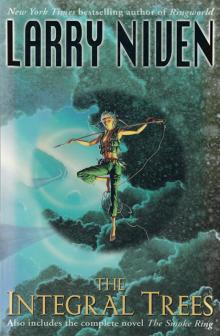 The Integral Trees - Omnibus
The Integral Trees - Omnibus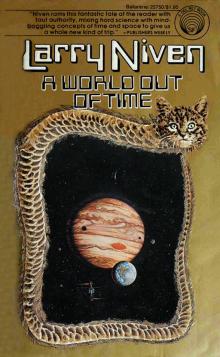 A World Out of Time
A World Out of Time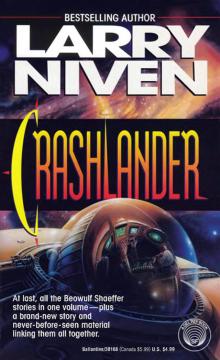 Crashlander
Crashlander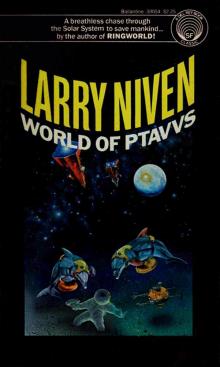 The World of Ptavvs
The World of Ptavvs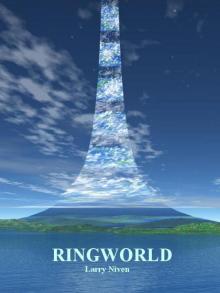 Ringworld
Ringworld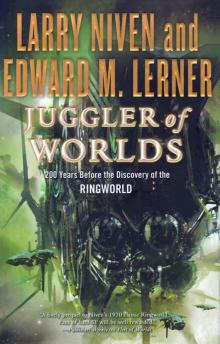 Juggler of Worlds
Juggler of Worlds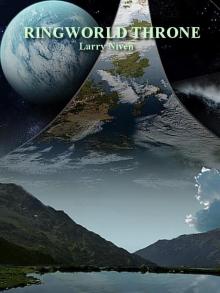 The Ringworld Throne
The Ringworld Throne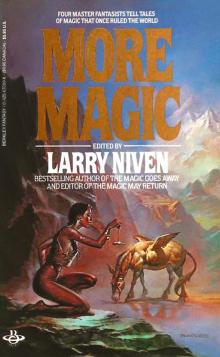 The Magic Goes Away Collection: The Magic Goes Away/The Magic May Return/More Magic
The Magic Goes Away Collection: The Magic Goes Away/The Magic May Return/More Magic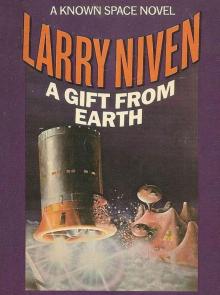 A Gift From Earth
A Gift From Earth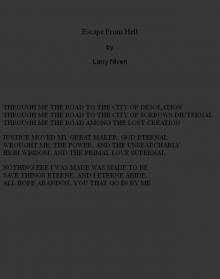 Escape From Hell
Escape From Hell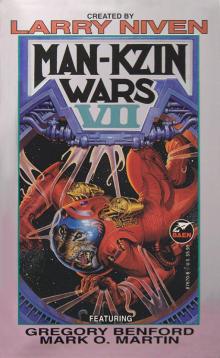 Larry Niven’s Man-Kzin Wars - VII
Larry Niven’s Man-Kzin Wars - VII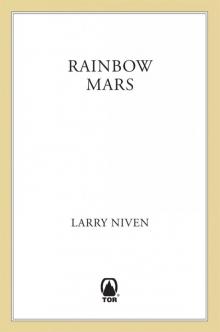 Rainbow Mars
Rainbow Mars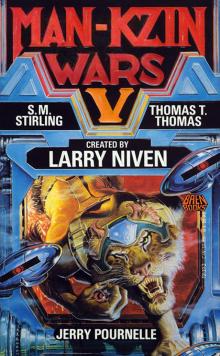 Larry Niven’s Man-Kzin Wars - V
Larry Niven’s Man-Kzin Wars - V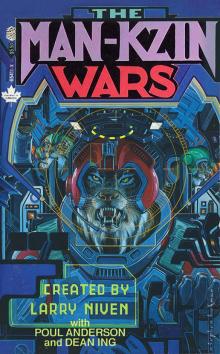 Larry Niven’s Man-Kzin Wars - I
Larry Niven’s Man-Kzin Wars - I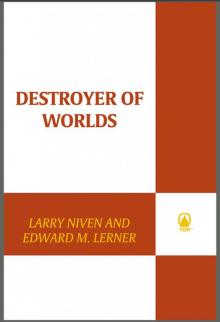 Destroyer of Worlds
Destroyer of Worlds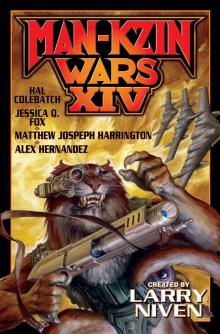 Man-Kzin Wars XIV
Man-Kzin Wars XIV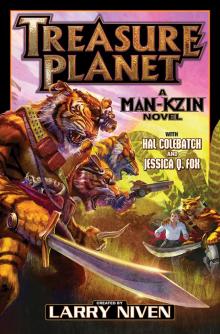 Treasure Planet
Treasure Planet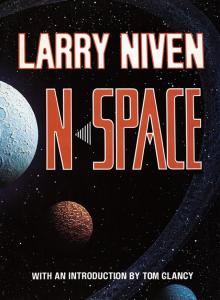 N-Space
N-Space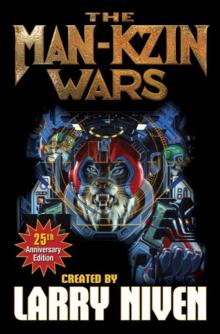 Man-Kzin Wars 25th Anniversary Edition
Man-Kzin Wars 25th Anniversary Edition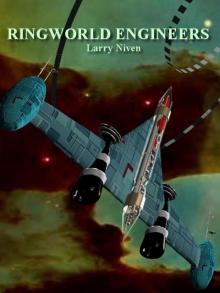 The Ringworld Engineers
The Ringworld Engineers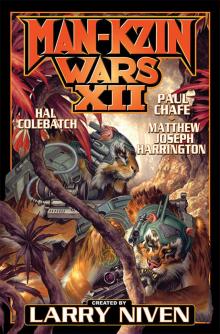 Larry Niven’s Man-Kzin Wars - XII
Larry Niven’s Man-Kzin Wars - XII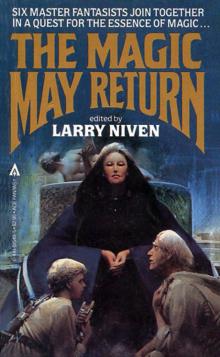 The Magic May Return
The Magic May Return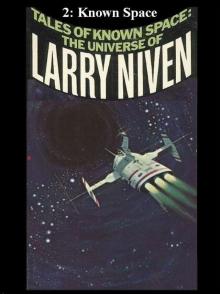 Tales of Known Space: The Universe of Larry Niven
Tales of Known Space: The Universe of Larry Niven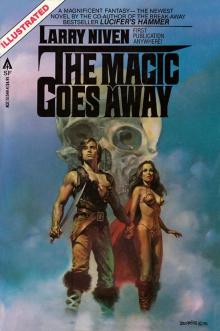 The Magic Goes Away
The Magic Goes Away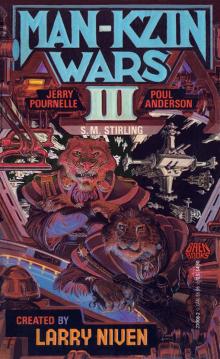 Larry Niven’s Man-Kzin Wars - III
Larry Niven’s Man-Kzin Wars - III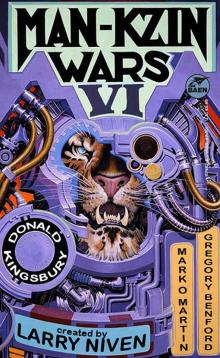 Larry Niven’s Man-Kzin Wars - VI
Larry Niven’s Man-Kzin Wars - VI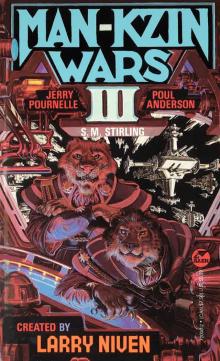 Man-Kzin Wars III
Man-Kzin Wars III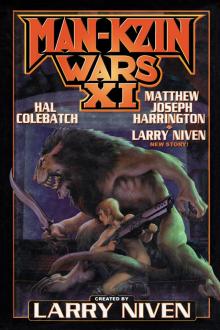 Larry Niven’s Man-Kzin Wars - XI
Larry Niven’s Man-Kzin Wars - XI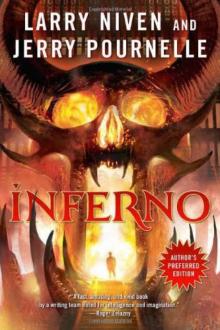 Inferno
Inferno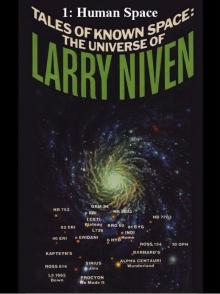 01-Human Space
01-Human Space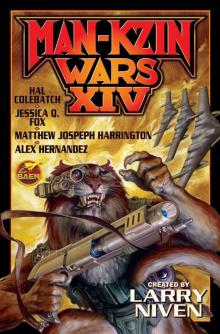 Larry Niven’s Man-Kzin Wars - XIV
Larry Niven’s Man-Kzin Wars - XIV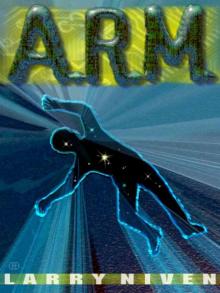 The Long Arm of Gil Hamilton
The Long Arm of Gil Hamilton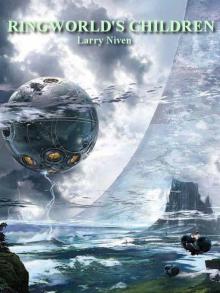 Ringworld's Children
Ringworld's Children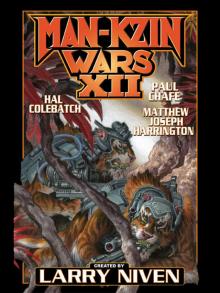 Man-Kzin Wars XII
Man-Kzin Wars XII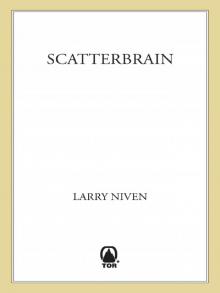 Scatterbrain
Scatterbrain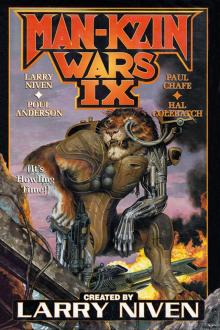 Man-Kzin Wars 9
Man-Kzin Wars 9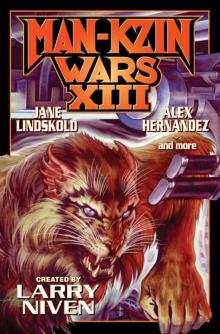 Man-Kzin Wars XIII
Man-Kzin Wars XIII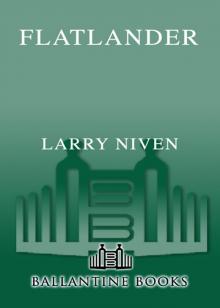 Flatlander
Flatlander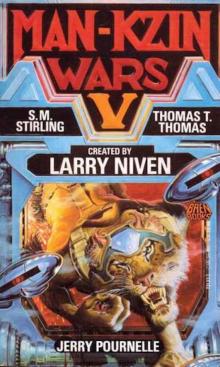 Man-Kzin Wars V
Man-Kzin Wars V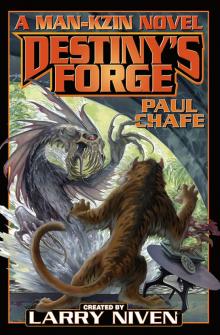 Destiny's Forge
Destiny's Forge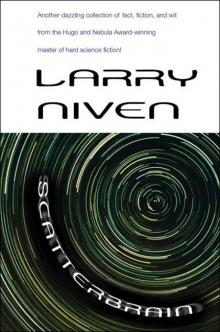 Scatterbrain (2003) SSC
Scatterbrain (2003) SSC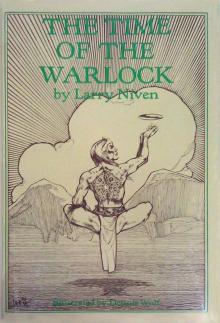 The Time of the Warlock
The Time of the Warlock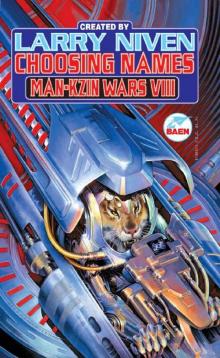 Choosing Names: Man-Kzin Wars VIII
Choosing Names: Man-Kzin Wars VIII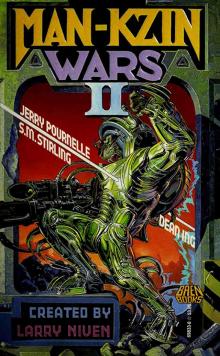 Larry Niven's Man-Kzin Wars II
Larry Niven's Man-Kzin Wars II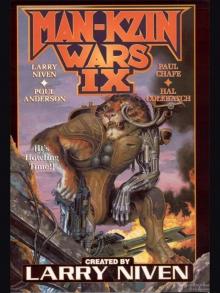 Man-Kzin Wars IX (Man-Kzin Wars Series Book 9)
Man-Kzin Wars IX (Man-Kzin Wars Series Book 9)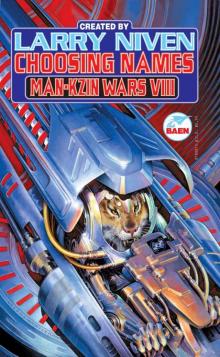 Choosing Names: Man-Kzin Wars VIII (Man-Kzin Wars Series Book 8)
Choosing Names: Man-Kzin Wars VIII (Man-Kzin Wars Series Book 8)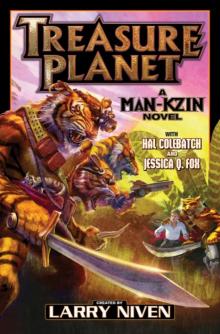 Treasure Planet - eARC
Treasure Planet - eARC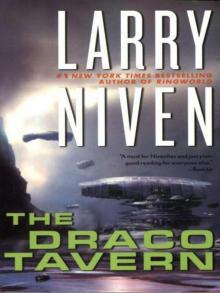 The Draco Tavern
The Draco Tavern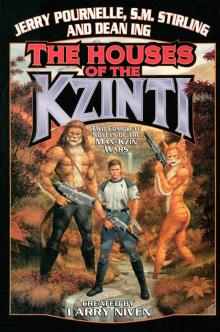 Larry Niven’s Man-Kzin Wars - The Houses of the Kzinti
Larry Niven’s Man-Kzin Wars - The Houses of the Kzinti The Fourth Profession
The Fourth Profession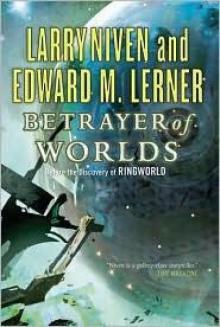 Betrayer of Worlds
Betrayer of Worlds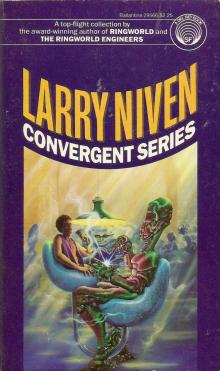 Convergent Series
Convergent Series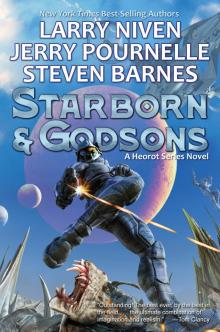 Starborn and Godsons
Starborn and Godsons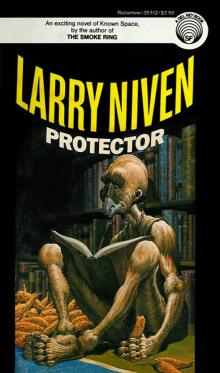 Protector
Protector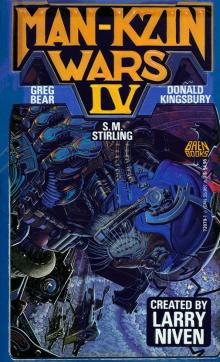 Larry Niven’s Man-Kzin Wars - IV
Larry Niven’s Man-Kzin Wars - IV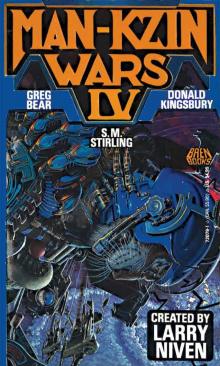 Man-Kzin Wars IV (Man-Kzin Wars Series Book 4)
Man-Kzin Wars IV (Man-Kzin Wars Series Book 4)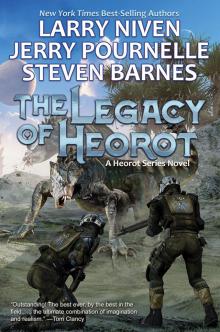 The Legacy of Heorot
The Legacy of Heorot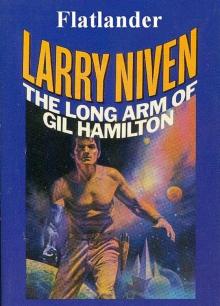 03-Flatlander
03-Flatlander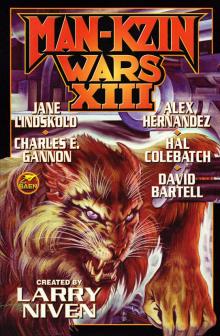 Larry Niven’s Man-Kzin Wars - XIII
Larry Niven’s Man-Kzin Wars - XIII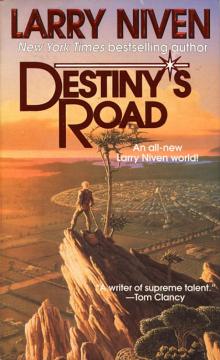 Destiny's Road
Destiny's Road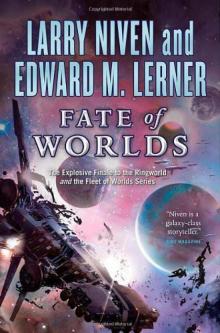 Fate of Worlds
Fate of Worlds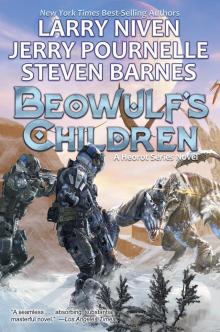 Beowulf's Children
Beowulf's Children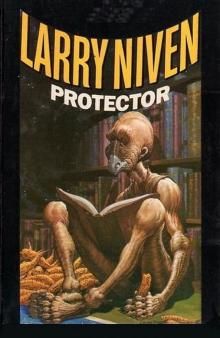 04-Protector
04-Protector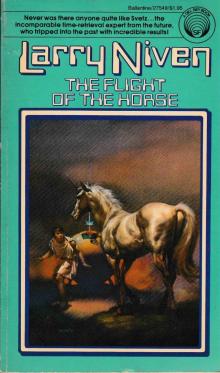 The Flight of the Horse
The Flight of the Horse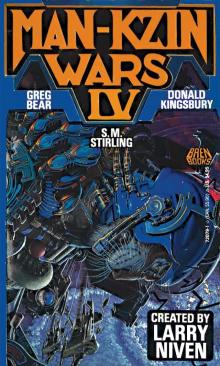 Man-Kzin Wars IV
Man-Kzin Wars IV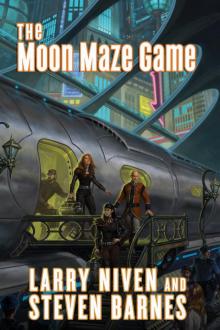 The Moon Maze Game dp-4
The Moon Maze Game dp-4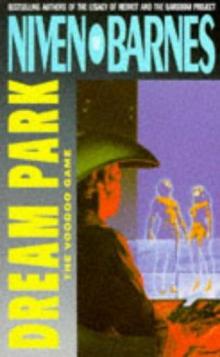 The California Voodoo Game dp-3
The California Voodoo Game dp-3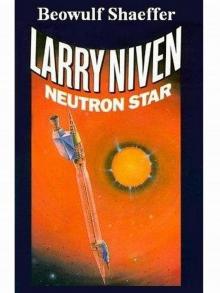 07-Beowulf Shaeffer
07-Beowulf Shaeffer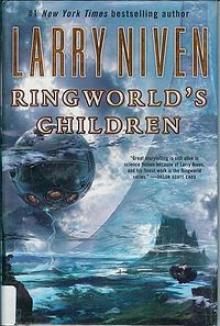 Ringworld's Children r-4
Ringworld's Children r-4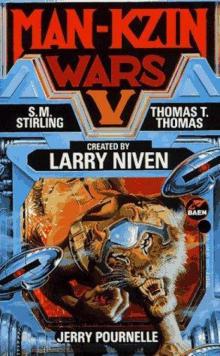 The Man-Kzin Wars 05
The Man-Kzin Wars 05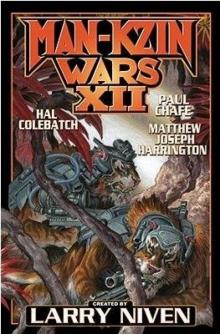 The Man-Kzin Wars 12
The Man-Kzin Wars 12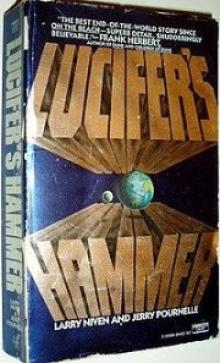 Lucifer's Hammer
Lucifer's Hammer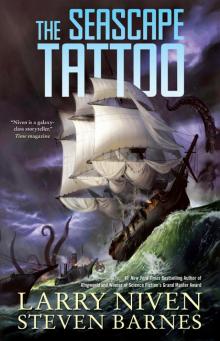 The Seascape Tattoo
The Seascape Tattoo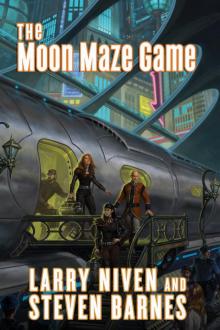 The Moon Maze Game
The Moon Maze Game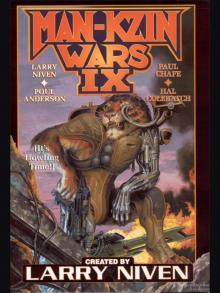 Man-Kzin Wars IX
Man-Kzin Wars IX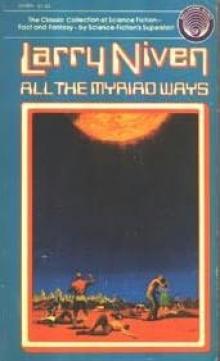 All The Myriad Ways
All The Myriad Ways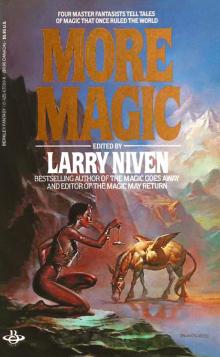 More Magic
More Magic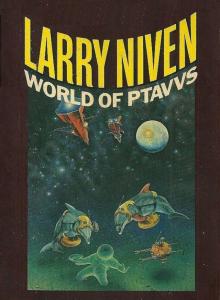 02-World of Ptavvs
02-World of Ptavvs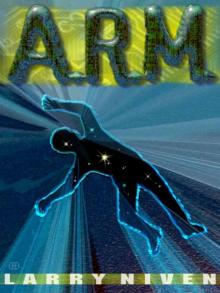 ARM
ARM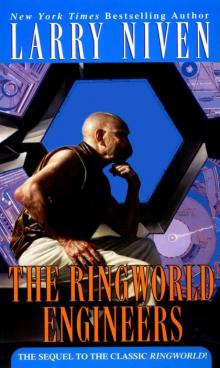 The Ringworld Engineers (ringworld)
The Ringworld Engineers (ringworld)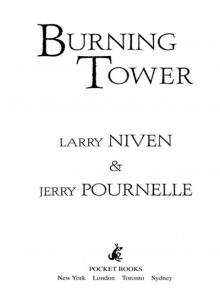 Burning Tower
Burning Tower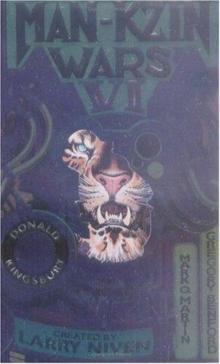 The Man-Kzin Wars 06
The Man-Kzin Wars 06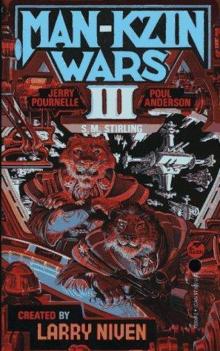 The Man-Kzin Wars 03
The Man-Kzin Wars 03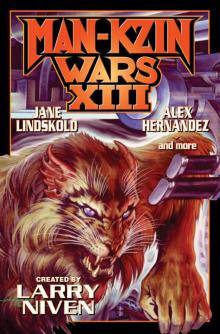 Man-Kzin Wars XIII-ARC
Man-Kzin Wars XIII-ARC The Hole Man
The Hole Man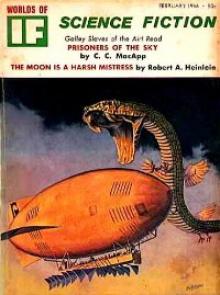 The Warriors mw-1
The Warriors mw-1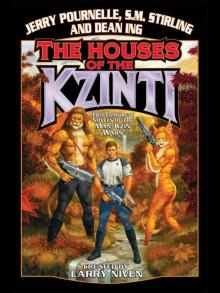 The Houses of the Kzinti
The Houses of the Kzinti The Man-Kzin Wars 07
The Man-Kzin Wars 07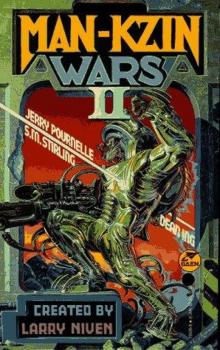 The Man-Kzin Wars 02
The Man-Kzin Wars 02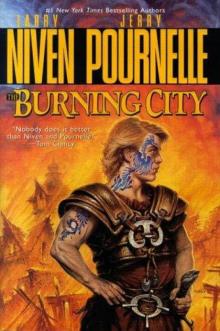 The Burning City
The Burning City At the Core
At the Core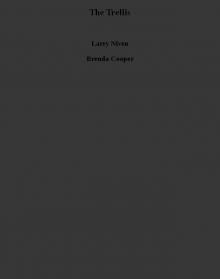 The Trellis
The Trellis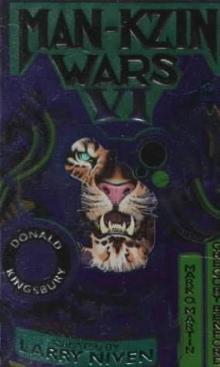 The Man-Kzin Wars 01 mw-1
The Man-Kzin Wars 01 mw-1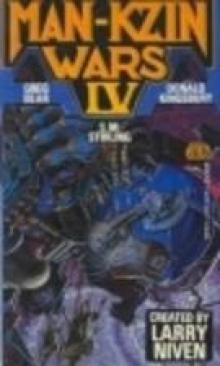 The Man-Kzin Wars 04
The Man-Kzin Wars 04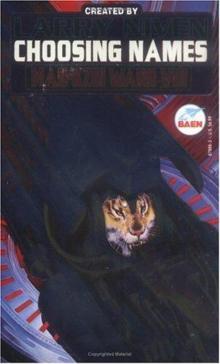 The Man-Kzin Wars 08 - Choosing Names
The Man-Kzin Wars 08 - Choosing Names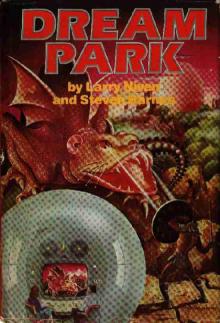 Dream Park
Dream Park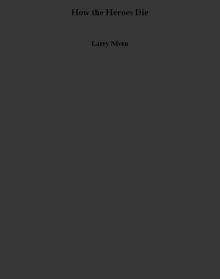 How the Heroes Die
How the Heroes Die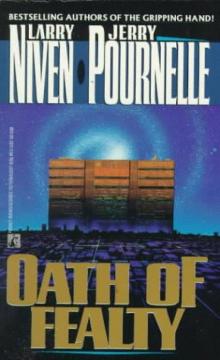 Oath of Fealty
Oath of Fealty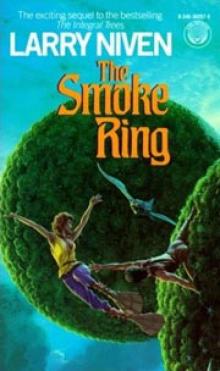 The Smoke Ring t-2
The Smoke Ring t-2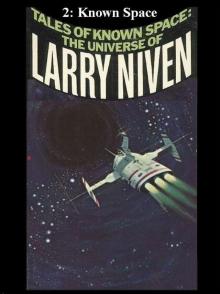 06-Known Space
06-Known Space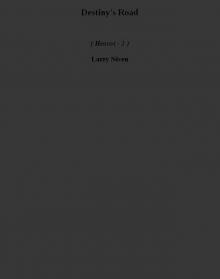 Destiny's Road h-3
Destiny's Road h-3 Flash crowd
Flash crowd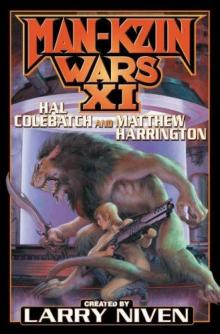 The Man-Kzin Wars 11
The Man-Kzin Wars 11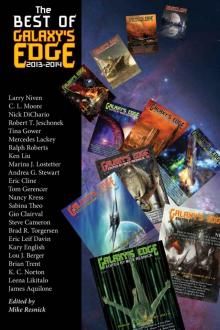 The Best of Galaxy’s Edge 2013-2014
The Best of Galaxy’s Edge 2013-2014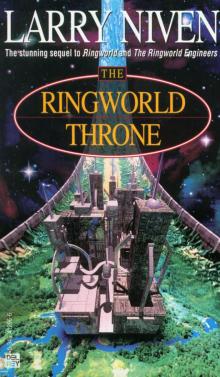 The Ringworld Throne r-3
The Ringworld Throne r-3 A Kind of Murder
A Kind of Murder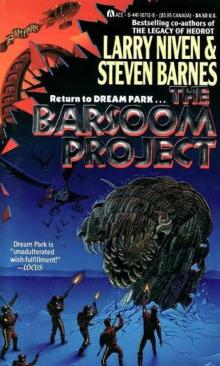 The Barsoom Project dp-2
The Barsoom Project dp-2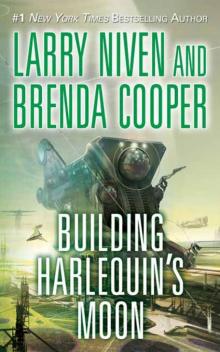 Building Harlequin’s Moon
Building Harlequin’s Moon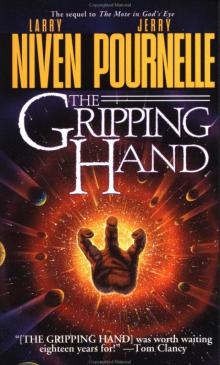 The Gripping Hand
The Gripping Hand The Leagacy of Heorot
The Leagacy of Heorot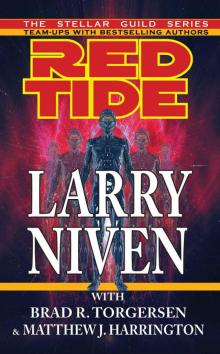 Red Tide
Red Tide Choosing Names mw-8
Choosing Names mw-8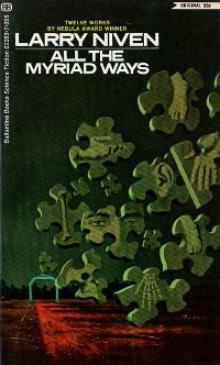 Inconstant Moon
Inconstant Moon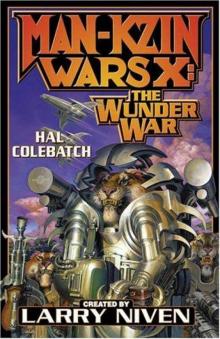 The Man-Kzin Wars 10 - The Wunder War
The Man-Kzin Wars 10 - The Wunder War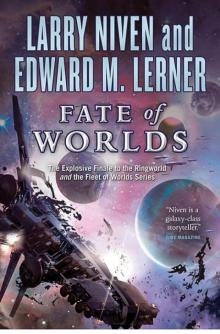 Fate of Worlds: Return From the Ringworld
Fate of Worlds: Return From the Ringworld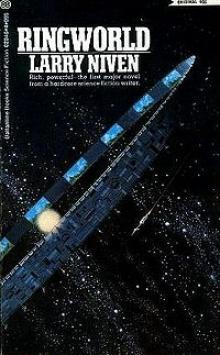 Ringworld r-1
Ringworld r-1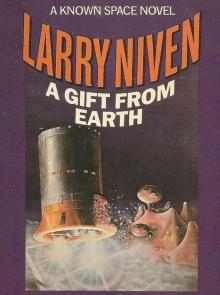 05-A Gift From Earth
05-A Gift From Earth The Integral Trees t-1
The Integral Trees t-1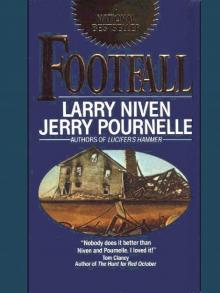 Footfall
Footfall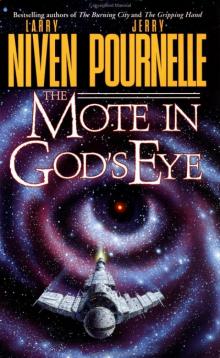 The Mote In God's Eye
The Mote In God's Eye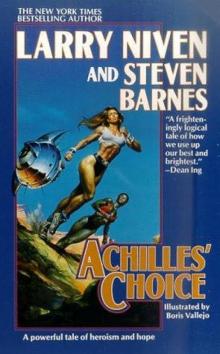 Achilles choice
Achilles choice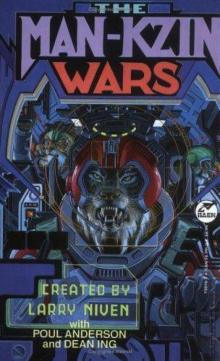 The Man-Kzin Wars 01
The Man-Kzin Wars 01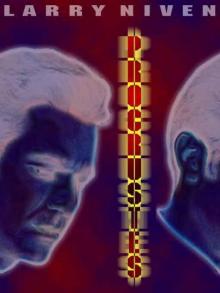 Procrustes
Procrustes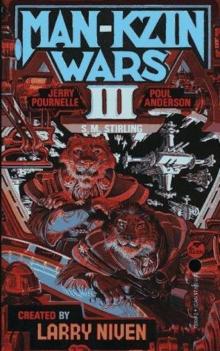 The Man-Kzin Wars 03 mw-3
The Man-Kzin Wars 03 mw-3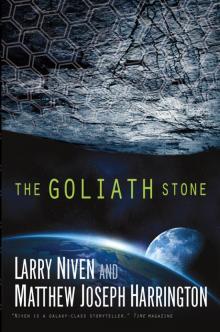 The Goliath Stone
The Goliath Stone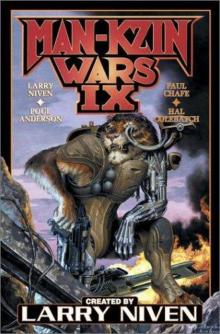 The Man-Kzin Wars 09
The Man-Kzin Wars 09